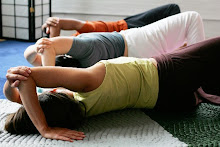 Are you one of the nearly 1.5 MILLION people who have seen this ad for Cadbury Chocolates? Click here to watch the video..
Are you one of the nearly 1.5 MILLION people who have seen this ad for Cadbury Chocolates? Click here to watch the video..
While I definitely believe the world could be a better place if people just ate more chocolate, that's not the reason for including it here. I'm amazed and amused at the coordination required to make those eyebrows dance! Some of the cynical commenters have said that the eyebrow movements are all computer generated, and so, not what they appear to be. Nonetheless, real or fake, the video makes you think -- how is it possible to do that? Truthfully, now: didn't you have a go at seeing whether YOUR eyebrows could do some of the dance?
Ah, Coordination, an unsung hero in the Quality of Life Hall of Fame. Other aspects of physical activity take more of the spotlight and glamor; Strength, Speed, and Agility being the most popular. It seems that whatever the physical problem to be solved, the first solutions we seek are 1) to become stronger, 2) to become faster, or 3) to become stretchier, or more limber. Yes, they are sexy and direct, easy to understand and tempting to emulate. Yet, none of these three can hope to exist or make sense without our friend Coordination.
If you're honest, you'll know immediately that any action that you want to improve will likely stay mediocre (or painful, or ineffective) if all you do is try to power your way through it, or do it faster, or bigger. In fact, in the presence of pain or difficulty, strength, speed, and "too big" will set you back, trigger a flare up, or otherwise be unpleasant. Coordination is much less flashy. It has much more to do with the HOW of action than with the WHAT. As a result, Coordination demands a level of attention that is not required if you are working from brute strength, speed, or other ego-expressions of excess or analysis. Coordination is concerned with tiny details. What is the preparation for action? What is the sequence of events? What is the timing, what happens when? Quiet Coordination is almost a wallflower among the popular kids who command easy and uninvolved attention. Coordination requires more focus, more investment, and more practice. Coordination is not just about knowing: it is about feeling and sensing your way through the problem. Yet, despite these disadvantages, without Coordination all attempts to improve Strength, Speed, and Agility will fail.
There's a famous saying in the somatics field: what you can't feel, you can't move; and what you can't move, you can't feel. In order to develop coordination, first you must develop your ability to sense and to feel yourself. Perhaps the two most basic questions of existence are, "Where am I?" and "What am I doing?" Without knowing those two facts, other questions like "WHY am I here?" have no foothold. You must know what you are doing before you can make any kind of meaningful change.
As for me: I'm the kid whose mother constantly cautioned, "Don't make that expression! What if your face froze that way?" When, in horror, I heard those words coming out of my mouth to my then four-year-old daughter, her response was, "I'll get a job on Star Trek." She always was pragmatic; such choices didn't exist during my childhood. A rubber face was good for comedy and theater, yet I never developed the coordination to do the close up stuff, the wry eyebrow, the subtle wink. I can only wink my left eye; my right eye will "wink" only when I eat something really sour, but it's not under my control. Through a lifetime of training, experience, feeling, and not feeling, our abilities to coordinate our action are shaped.
Coordination forms an arc, an intention, a coherent gesture, a gestalt. It is concrete and functional rather than abstract and reductionist. While in the Feldenkrais Method we pay attention to details, we do not micromanage action. Dissecting yourself in motion, consciously thinking "contract this muscle and that one while maintaining this or that" is an exercise in futility, because it's not the way the brain works. Your brain controls every action, and it processes movement as a pattern of action, not as a series of isolated muscular events.
People often find classes or lessons in the Feldenkrais Method to be a breath of fresh air, an unusual intellectual and sensory treat. If you take a few moments to notice and feel the effects of what you are doing, you can make much more intelligent choices about what you might do next. You can make finer distinctions and create better outcomes when you take the time to be aware of details. Whether you're learning a tango or recovering from an injury, Coordination is your best friend.



No comments:
Post a Comment